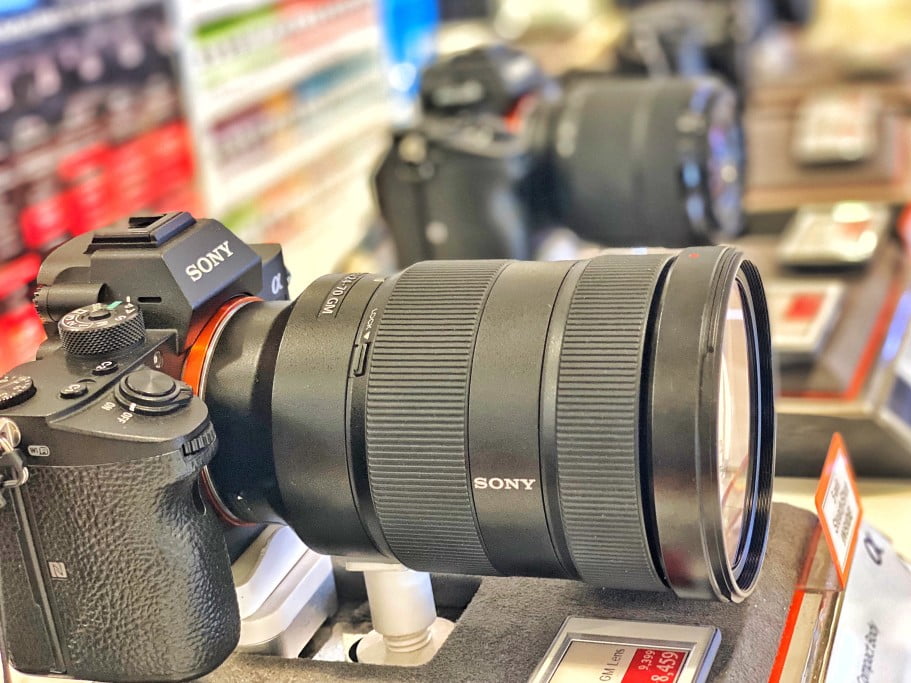If you have been experimenting with the various features of a digicam, you may be wondering what is the function of a Bayer filter in a digital camera. Many of the best digital cameras seem to have access to these filters, after all. If you are still confused, don’t worry. We have all the answers.
KEY TAKEAWAYS:
- The Bayer filter is named after its inventor, Kodak Eastman’s Bryce Bayer.
- The Bayer filter is the primary reason most digital cameras are able to shoot in color.
- This filter works by spreading out a mosaic of primary colors ahead of the photosites that occupy a digital camera’s sensor array.
What is the Bayer Filter?
The Bayer filter is named after its inventor, Eastman Kodak’s Bryce Bayer. It is a color filter integrated into most modern digital cameras dating back to the earliest models.
Insider Tip
Most cameras allow for the Bayer filter to be disabled, which will result in black and white images.
What Does the Bayer Filter do?
At its root, the Bayer filter seeks to emulate the human eye. It is an integral part of a digital camera’s sensor, containing an array, or mosaic, of primary and secondary colors that combine to create digital images. This mosaic resides above the millions of photosites that occupy a traditional sensor chip, informing the end result. If you are wondering what an exposure setting in a digital camera is, you’ll have to go through the Bayer filter first.
Alternatives to the Bayer Sensor
A Bayer sensor is a must for most digital cameras when it comes to reproducing color digital images, thanks to the robust color filter array. However, there are some alternatives that cameras have implemented throughout the years.
Foveon Sensor
Some modern digital cameras include something called a Foveon sensor instead of a traditional Bayer filter. What’s the difference? Foveon sensors tend to include a more diversified color mosaic, with more detailed blue filters, which proponents claim translates to sharper images. However, modern photographers continue to debate this fact, as many prefer the Bayer filter for reproducing color, as the exposure times are lower.
Color Co-site Sampling
Another newer technology is called color co-site sampling. This technique collects multiple images at once from the digital sensor, combining them into one colorful photograph. Proponents claim that this process creates a much sharper image than what can be found with a Bayer filter, but detractors note that it requires a whole lot of processing speed. Though, if you are wondering what is a plane of focus in a digital camera and how to use it, a CCD sensor can increase the range of said focal plane.
Dichroic Filter
Dichroic filters use small reflex mirrors to direct incoming light and incident light toward the image sensor, reflecting the colors from the mirror. These filters are typically used in commercial photography scenarios, thanks to an increased dynamic range.
Warning
Bayer filters are known for allowing a lot of green light through, with a reduction in blue channels and blue pixels. Take that into consideration when setting up a shot.
F.A.Q.S
Why does a Bayer filter have more green?
A Bayer filter reflects more green light thanks to, well, humans. The human eye can see more green light than red light or blue light, so the sensor chip follows suit.
What is a quad Bayer filter?
This is a newer iteration of the Bayer filter that maximizes an electrical signal and a light source to create a sharper color channel and, as such, a sharper color image. It is used primarily in 4K recording.
How is a Bayer filter made?
It is actually quite simple. A series of dyes are overlaid over the image sensor on a transparent mosaic.
STAT: The Bayer filter pattern is half green, one-quarter red, and one-quarter blue and is also called BGGR, RGBG, GRBG, or RGGB. (source)



































![Best Point and Shoot Camera in [year] ([month] Reviews) 27 Best Point and Shoot Camera in 2025 (October Reviews)](https://www.gadgetreview.dev/wp-content/uploads/Nikon-Coolpix-B500.jpg)
![Best Underwater Camera in [year] ([month] Reviews) 28 Best Underwater Camera in 2025 (October Reviews)](https://www.gadgetreview.dev/wp-content/uploads/best-underwater-camera-image.jpg)
![Best Digital Cameras in [year] ([month] Reviews) 29 Best Digital Cameras in 2025 (October Reviews)](https://www.gadgetreview.dev/wp-content/uploads/what-is-resolution-on-digital-camera-1.jpg)
![Best Digital Camera Docking Stations in [year] 30 Best Digital Camera Docking Stations in 2025](https://www.gadgetreview.dev/wp-content/uploads/best-digital-camera-docking-stations-image.jpg)
![Best Vlogging Camera in [year] ([month] Reviews) 31 Best Vlogging Camera in 2025 (October Reviews)](https://www.gadgetreview.dev/wp-content/uploads/best-vlogging-camera-image.jpg)
![Best Mirrorless Camera in [year] ([month] Reviews) 32 Best Mirrorless Camera in 2025 (October Reviews)](https://www.gadgetreview.dev/wp-content/uploads/best-mirrorless-camera-image.jpg)
![Best GoPro in [year] ([month] Reviews) 33 Best GoPro in 2025 (October Reviews)](https://www.gadgetreview.dev/wp-content/uploads/best-gopro-image.jpg)
![Best Digital Camera Tripods in [year] 34 Best Digital Camera Tripods in 2025](https://www.gadgetreview.dev/wp-content/uploads/best-digital-camera-tripods-image.jpg)
![Best Canon Digital Cameras in [year] 35 Best Canon Digital Cameras in 2025](https://www.gadgetreview.dev/wp-content/uploads/best-canon-digital-cameras-image.jpg)
![Best Polaroid Digital Cameras in [year] 36 Best Polaroid Digital Cameras in 2025](https://www.gadgetreview.dev/wp-content/uploads/best-polaroid-digital-cameras-image.jpg)
![Best Small Digital Camera Cases in [year] 37 Best Small Digital Camera Cases in 2025](https://www.gadgetreview.dev/wp-content/uploads/best-small-digital-camera-case-image.jpg)
![Best Digital Camera USB Cables in [year] 38 Best Digital Camera USB Cables in 2025](https://www.gadgetreview.dev/wp-content/uploads/best-digital-camera-usb-cable-image.jpg)
![Best Digital Camera Bags in [year] 39 Best Digital Camera Bags in 2025](https://www.gadgetreview.dev/wp-content/uploads/best-digital-camera-bag-image.jpg)
![Best Sony Digital Cameras in [year] 40 Best Sony Digital Cameras in 2025](https://www.gadgetreview.dev/wp-content/uploads/best-sony-digital-cameras-image.jpg)
![Best Panasonic Digital Cameras in [year] 41 Best Panasonic Digital Cameras in 2025](https://www.gadgetreview.dev/wp-content/uploads/best-panasonic-digital-cameras-image.jpg)
![Best Digital Camera Accessories in [year] 42 Best Digital Camera Accessories in 2025](https://www.gadgetreview.dev/wp-content/uploads/best-digital-camera-accessories-image.jpg)
![Best Kodak Digital Cameras in [year] 43 Best Kodak Digital Cameras in 2025](https://www.gadgetreview.dev/wp-content/uploads/best-kodak-digital-cameras-images.jpg)
![Best Video Cameras in [year] ([month] Reviews) 44 Best Video Cameras in 2025 (October Reviews)](https://www.gadgetreview.dev/wp-content/uploads/best-video-cameras-image.jpg)
![Best Compact Cameras in [year] 45 Best Compact Cameras in 2025](https://www.gadgetreview.dev/wp-content/uploads/best-compact-camera-image.jpg)
![Best Digital Cameras with Wifi in [year] 46 Best Digital Cameras with Wifi in 2025](https://www.gadgetreview.dev/wp-content/uploads/best-digital-camera-with-wifi-image.jpg)



















